The ephemerality of Amador’s process invites him to meditate on topics beyond it.
Read on for My Modern Met’s exclusive interview.
Disk, Greyhound Beach, California, 2017
How did you start making sand art?
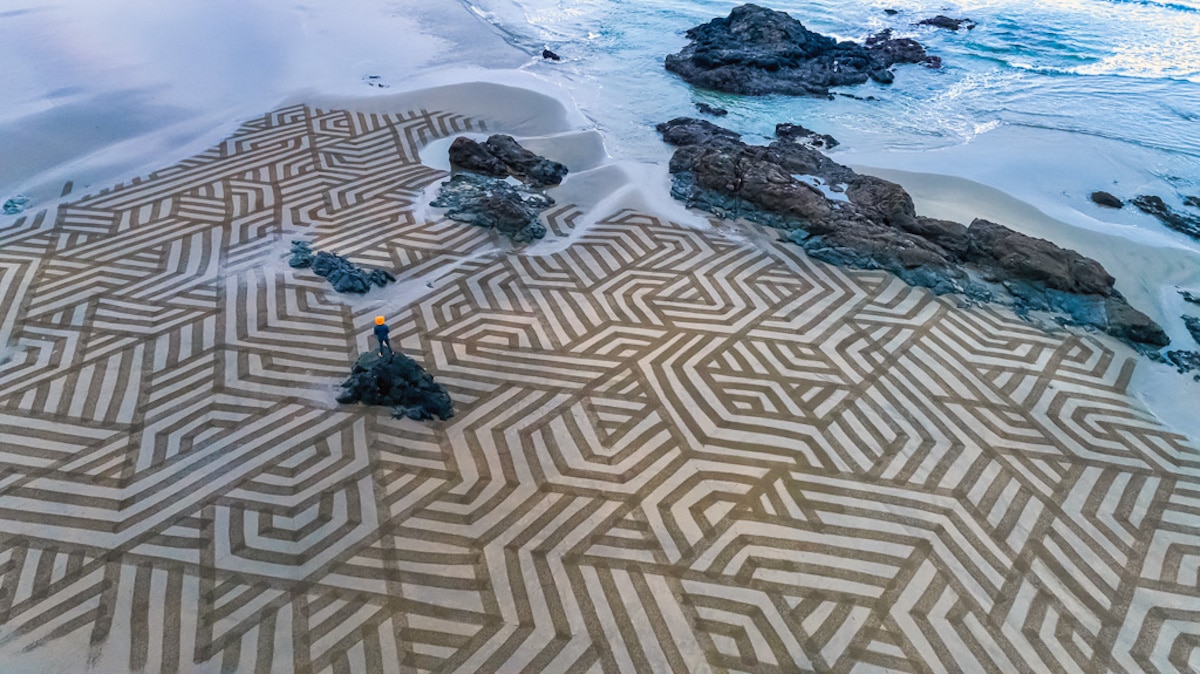
“Coordinated Chaos II,” California, 2019
Before the landscape artwork, I did sculptural work.
That work turned out to be highly geometric.
Crop circles share many of these techniques, and so my eye as drawn there as well.
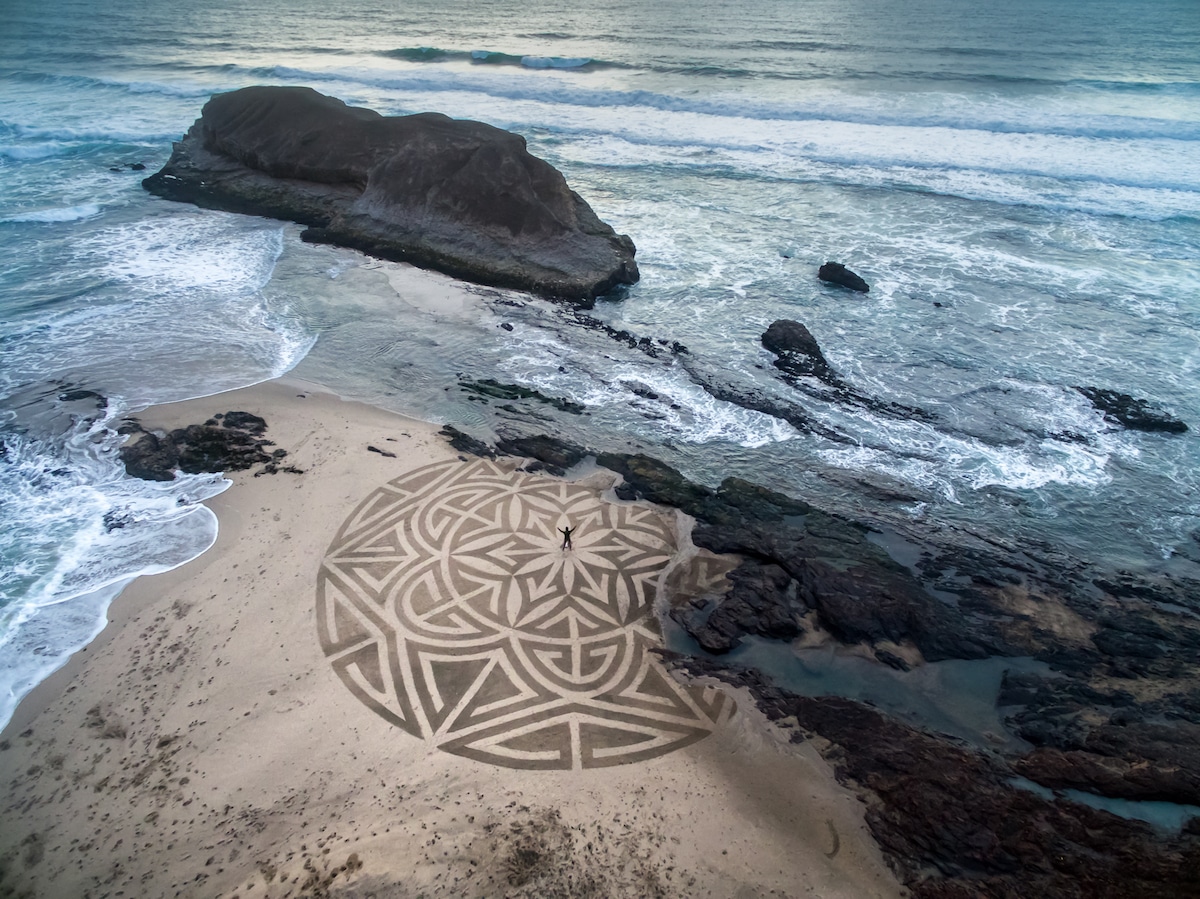
“Disk,” Greyhound Beach, California, 2017
What is your inspiration for these abstract pieces?
Nature is my ultimate inspiration.
My studies by this time had turned towards fractals and patterns in nature.
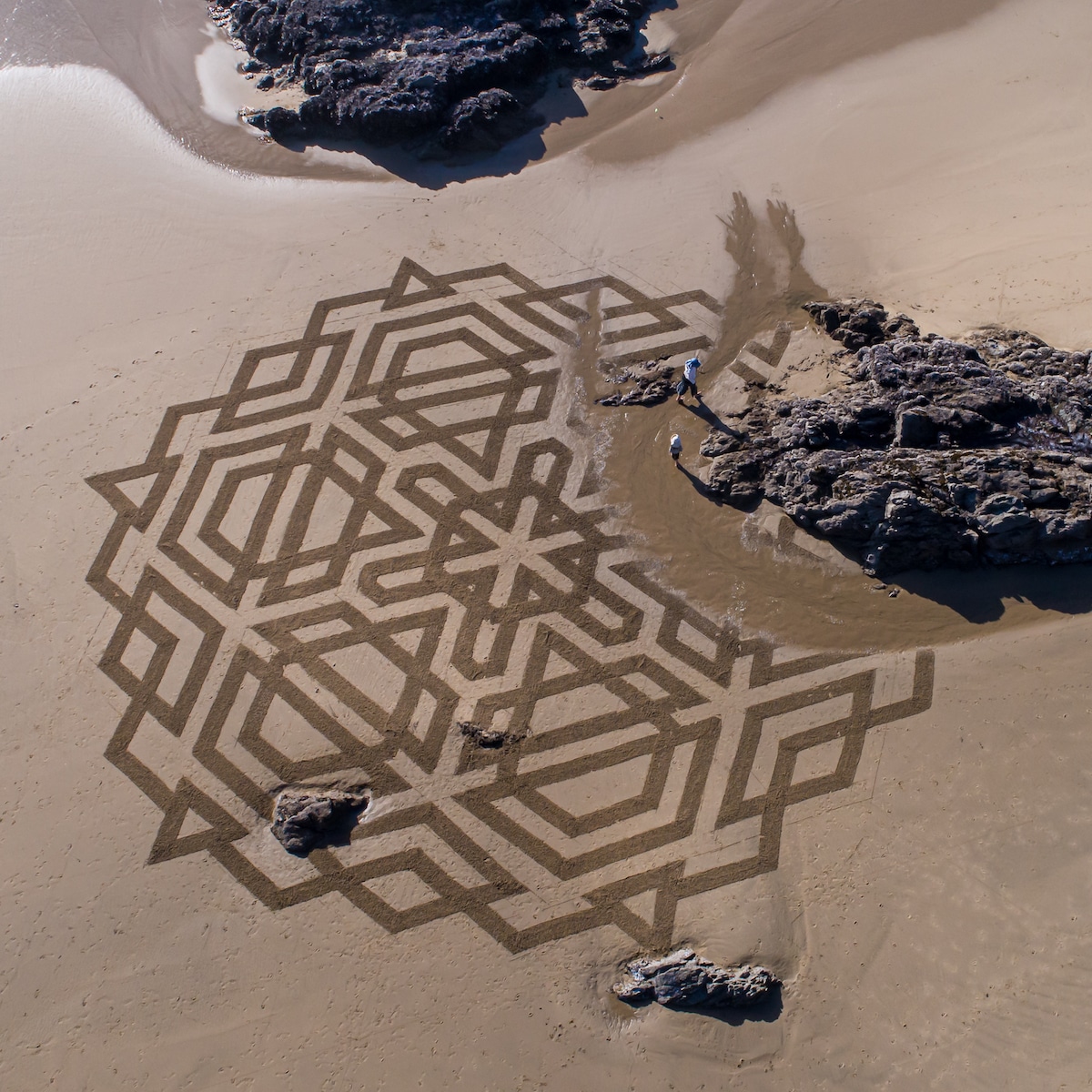
“Disk,” Kehoe, California, 2017
My geometric work held a huge issue for me.
They felt static and lifeless, whereas these new areas of research felt alive and dynamic.
I have always been drawn to nature but could never figure out how to decipher what I was seeing.
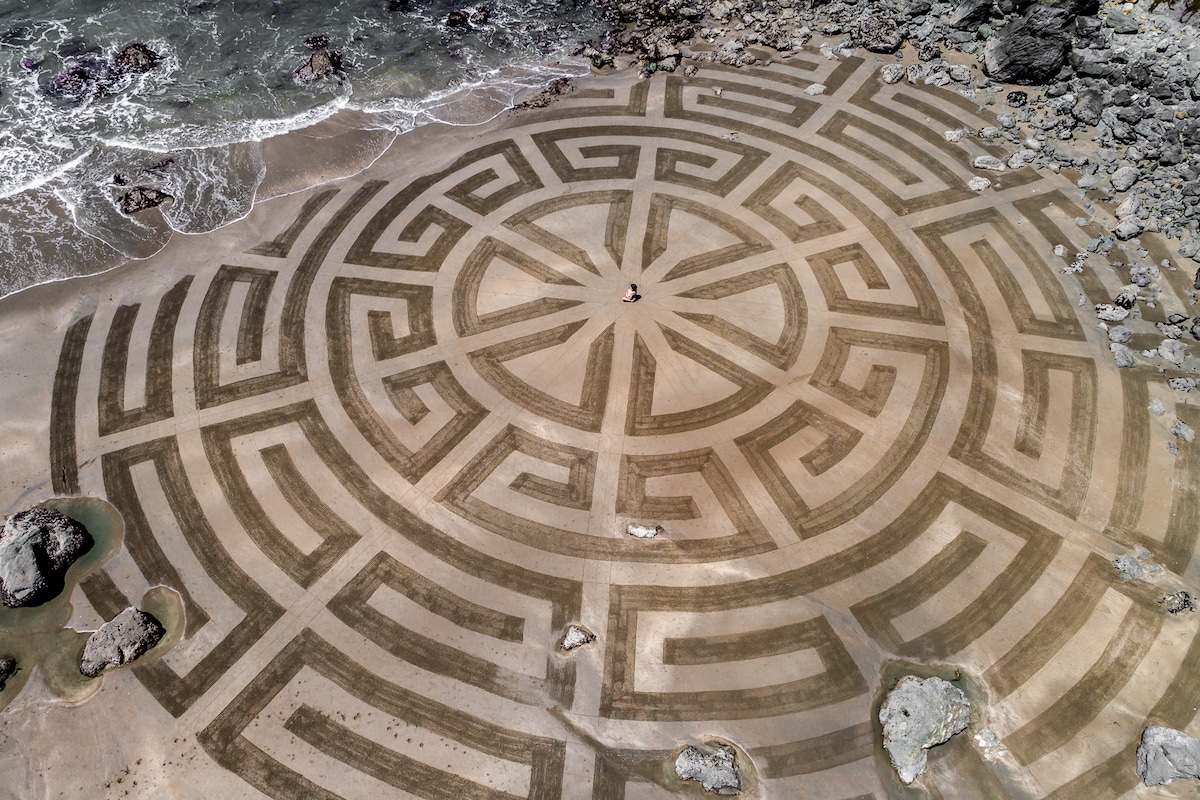
“Disk VII,” California, 2017
For instance, at some temperature threshold, the moisture in the atmosphere will precipitate and form a cloud.
If the temperature goes up then the water evaporates.
If the moisture goes up, rain may occur.

“Coordinated Chaos I,” San Francisco, 2019
The cloud doesn’t know what it looks likeit’s just appearing as a result of other forces interacting.
Think also of ripples in the sand formed by water or wind.
Or the way tree growth responds to light.
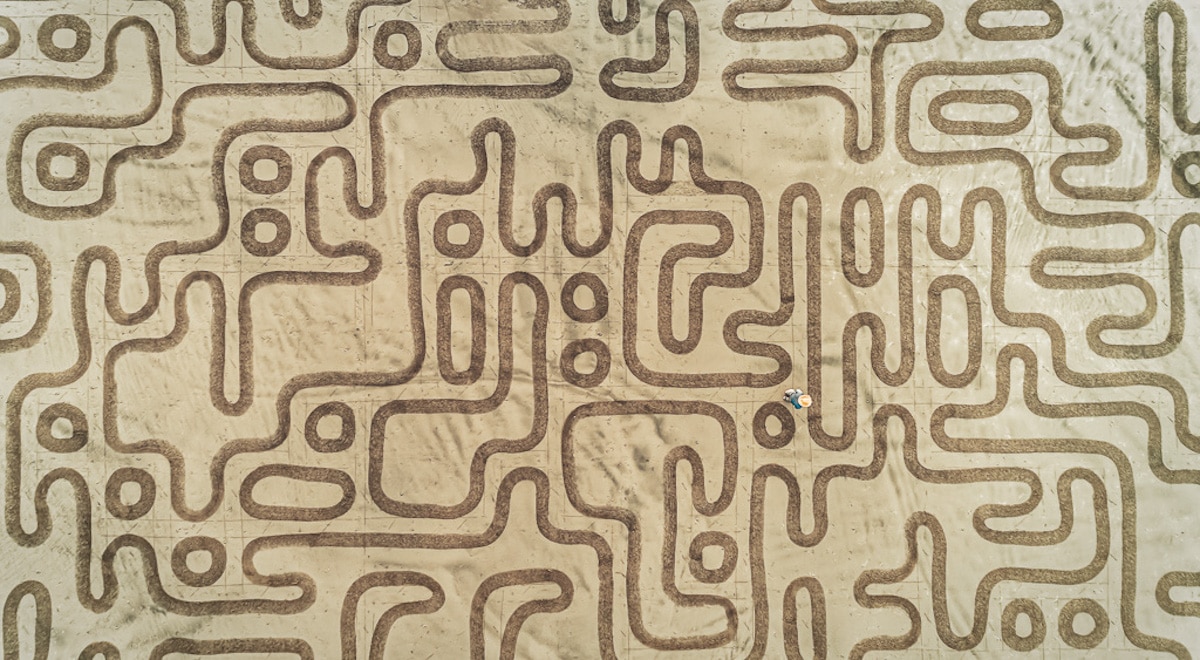
“Coordinated Chaos I,” San Francisco, 2019 (detail)
Each species in their own way, making their own identifiable yet individually unique profiles in the forest.
In this way, the artwork would emerge without specific direction or intent.
Sometimes an approach I come upon for working at the landscape level will suggest its own possibilities.
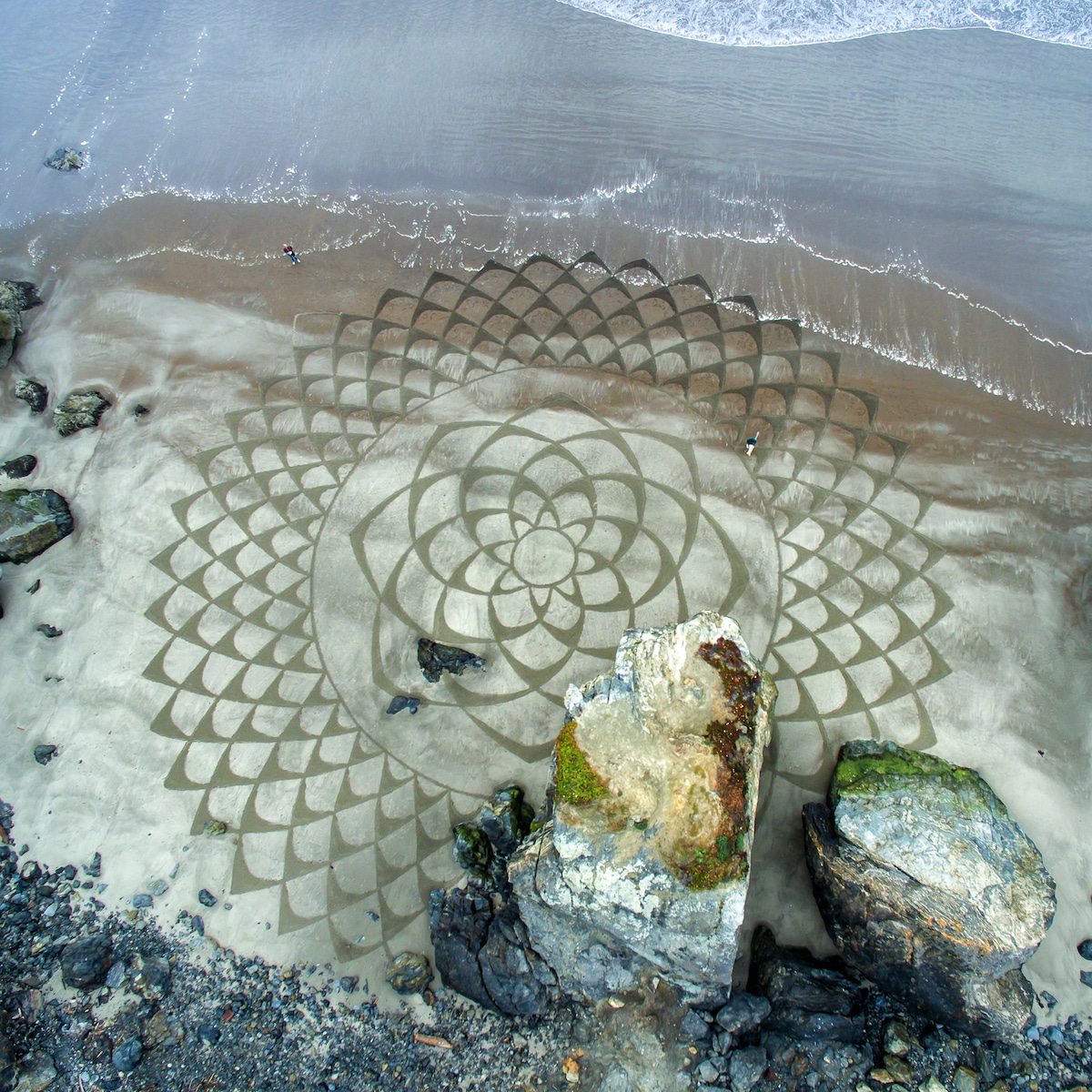
“Mandala,” Stinson Beach, California, 2015
I’ll explore all of this in my sketchbook.
Each design has its own approach.
For the most part, I come to the beach without specific preconceptions.
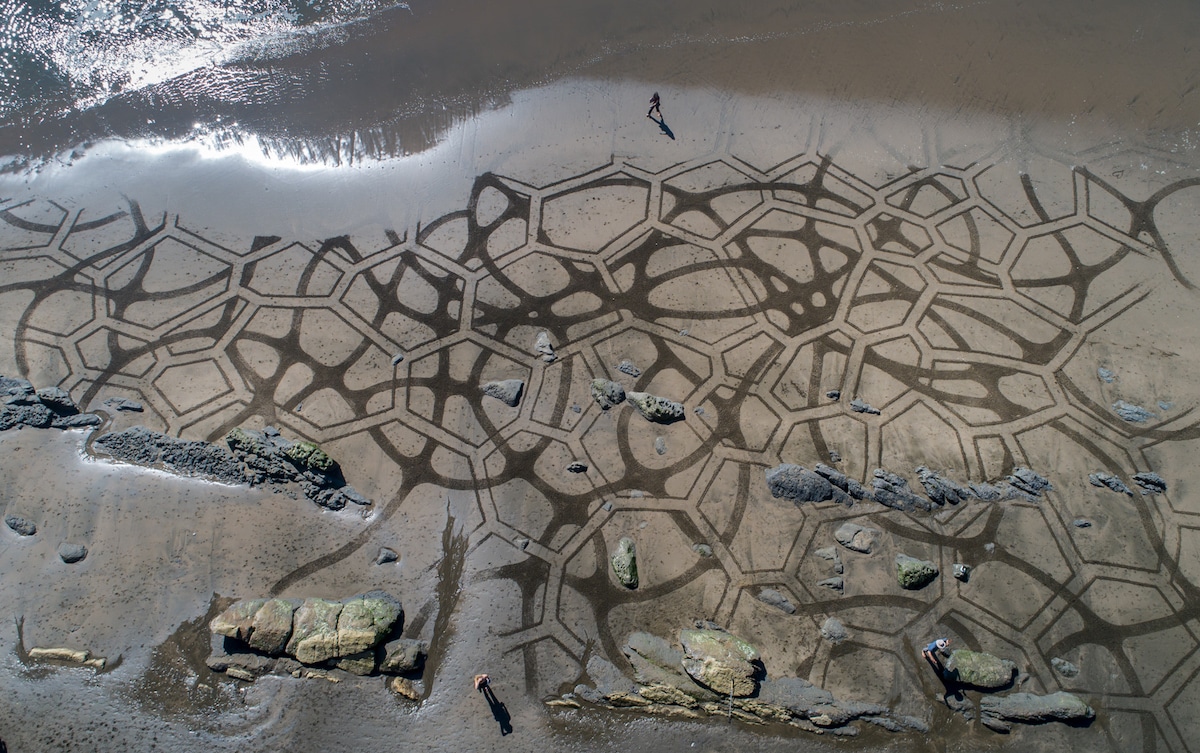
“Substructures V,” Half Moon Bay, California, 2009
However, once I have begun work on a new piece I know the process I will follow.
Some designs require more space, some work best when there are natural nooks and crannies to fill in.
They are all changing throughout the month and year so I must be flexible with what I do.
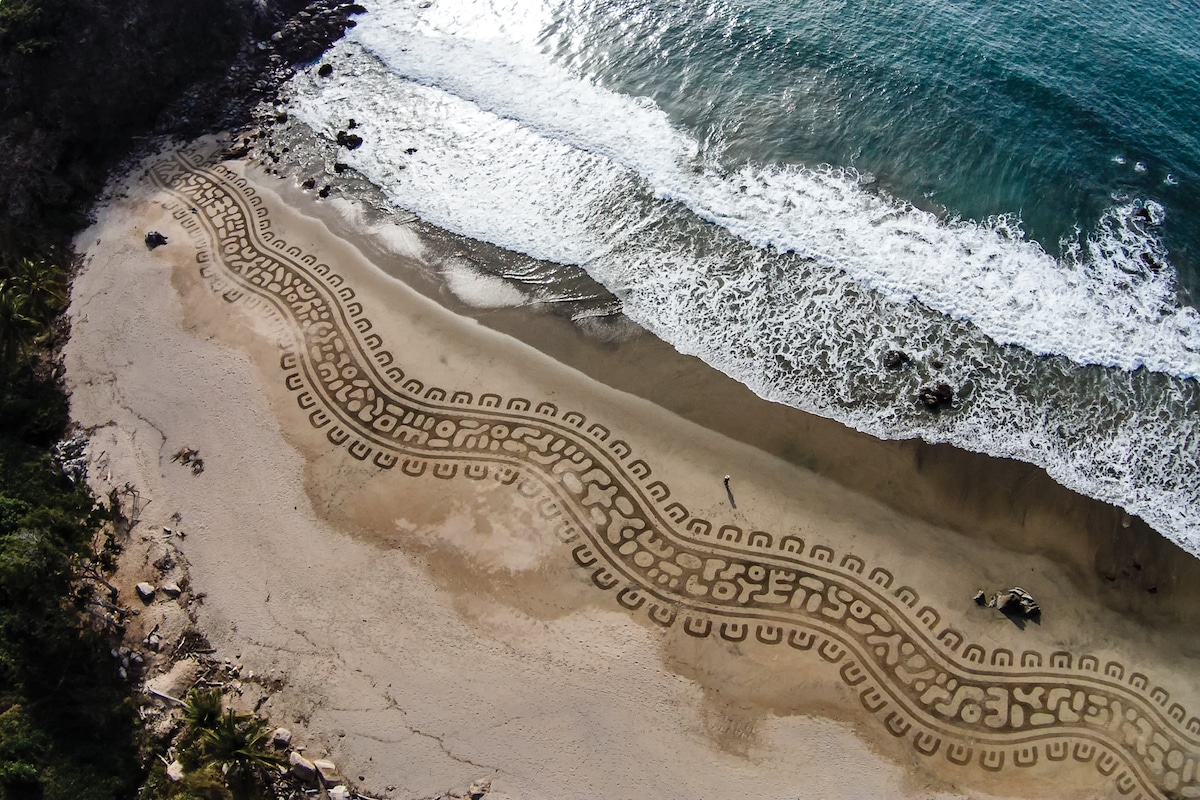
“Xiuhcoatl I,” Sayulita, Mexico, 2014
At the start, there was a subversive quality to the art.
Eventually, all things I have done and that all humans have ever done will be erased.
It had me recognize that at the heart the desire for permanence is a fear of our mortality.
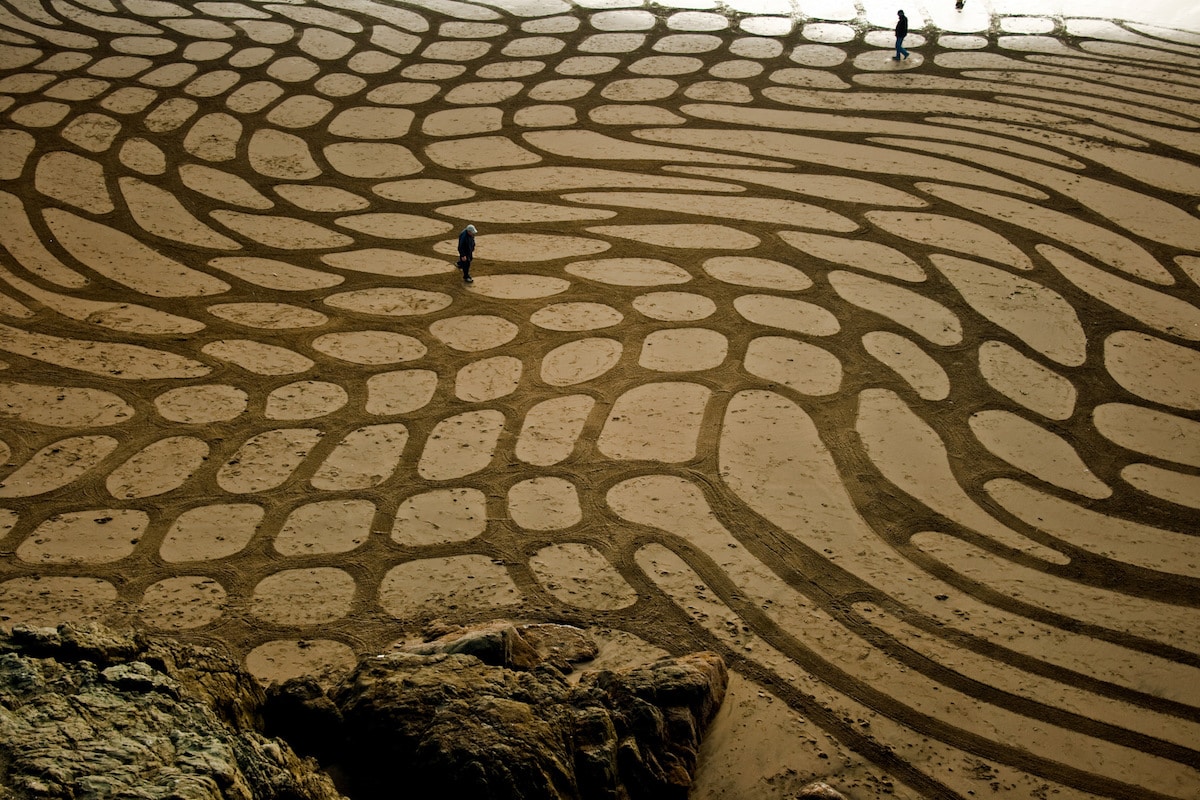
“Warped Fields,” San Francisco, 2009
How do we choose to spend our time in this limited existence?
It is a fundamental question that can be both challenging and inspiring.
It took me to the next recognition: what is worth doing other than that which elevates my spirit?
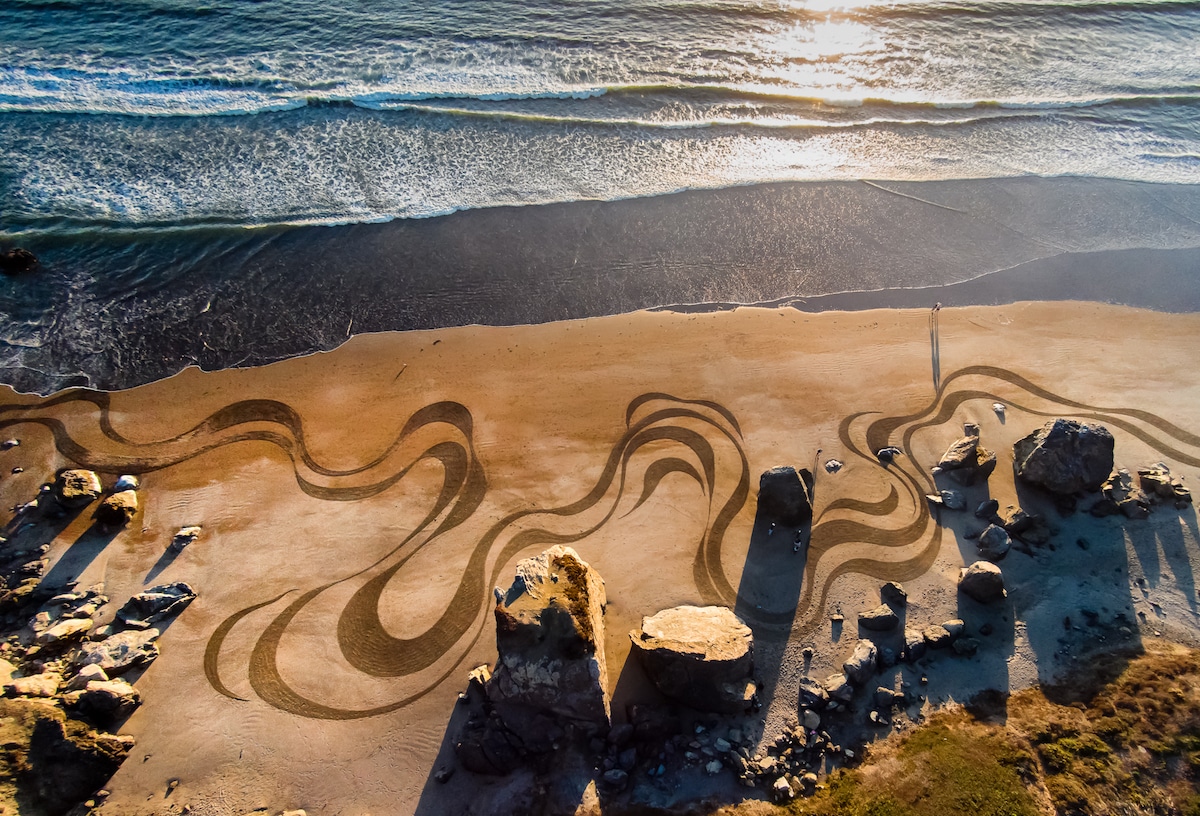
“Flow II,” Stinson Beach, California, 2015
My art is a pointer to this larger awarenessto value the life experience as it is happening.
Warped Fields, San Francisco, 2009
How has your artistic practice changed over time?
There are a couple of things I appreciate about the development of my work.
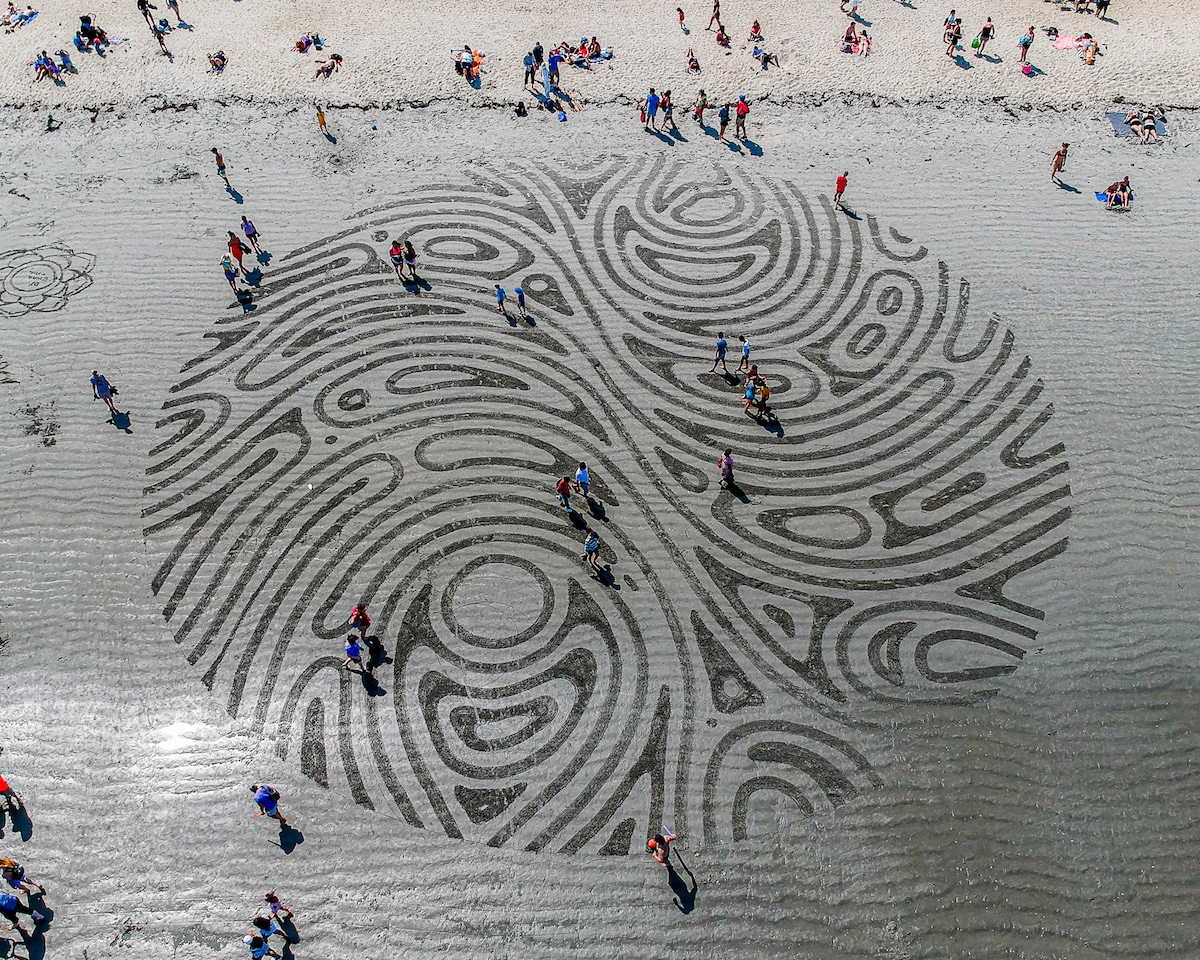
“Thumbprint,” Boston, 2019
Working outside and at the beach (barefoot!)
was a huge and welcome change.
Flow II, Stinson Beach, California, 2015
Is there an artwork you are most proud of?
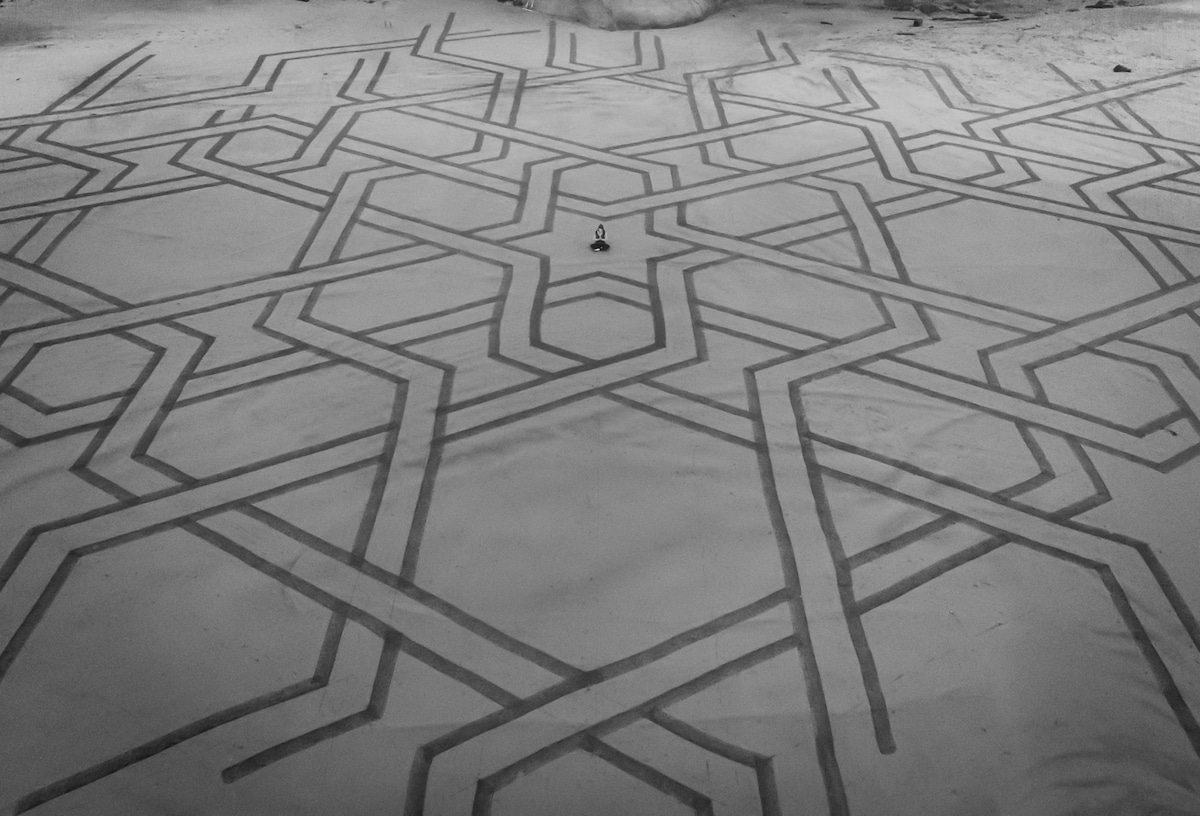
“Field II,” California, 2018
Yes.Flow IIis my largest piece that works with a specific landscape.
My inspiration was the Japanese water painting of a river flowing.
I designed it on an aerial photo of the location.
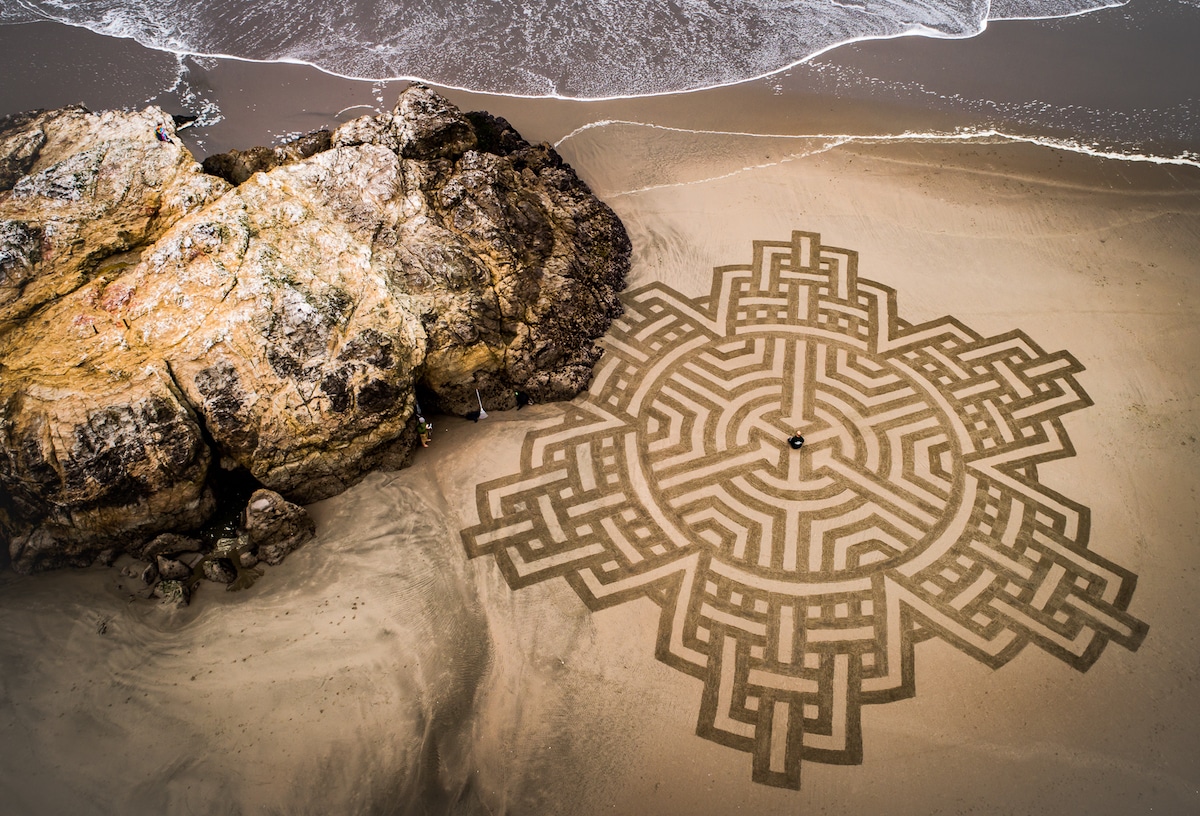
“Disk VI,” Sutro Baths, California, 2017
Different designs have different endings.
Some need to reach a certain completion.
A design may need a few tries before it achieves completion as a concept.
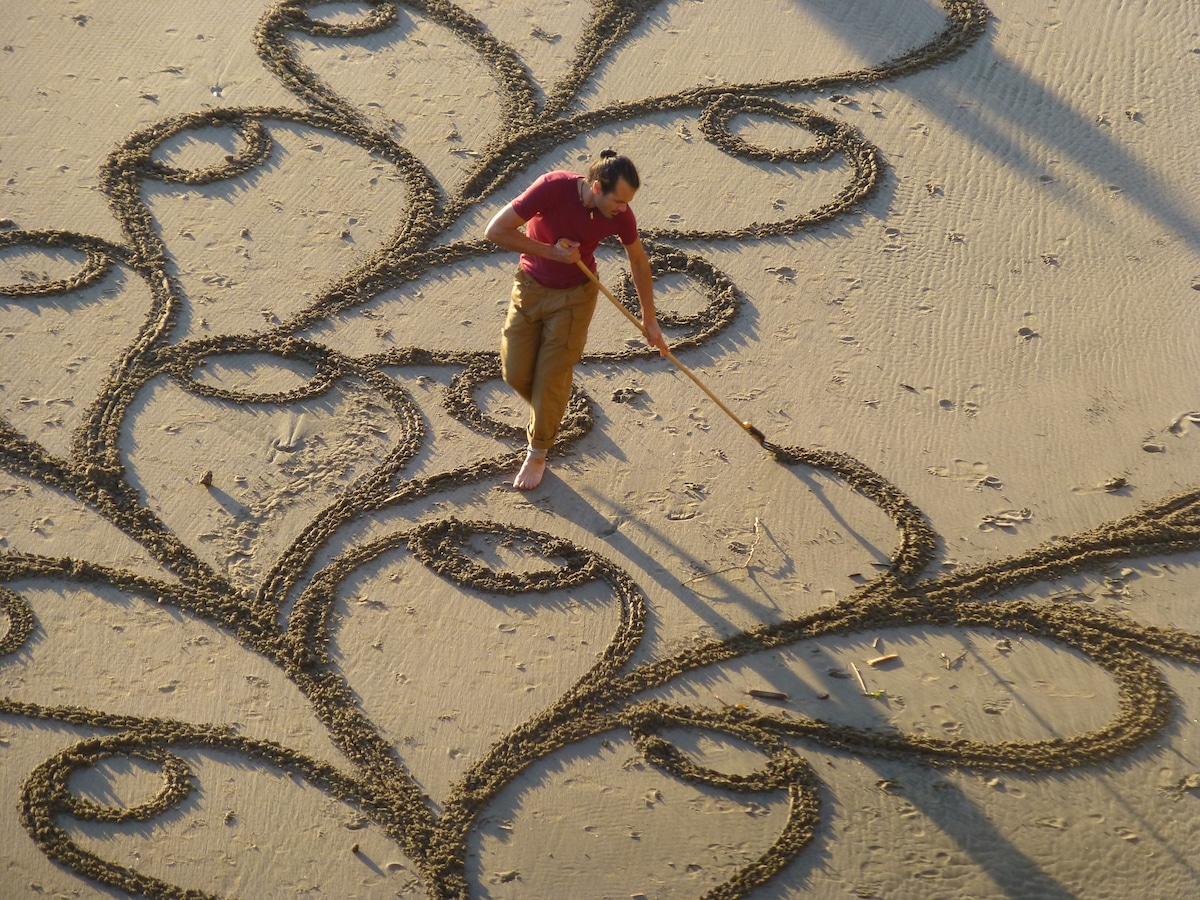
What is the best thing about being an artist?
It is gratifying to create work that brings joy, wonder, and inspiration to so many.
Disk VI, Sutro Baths, California, 2017